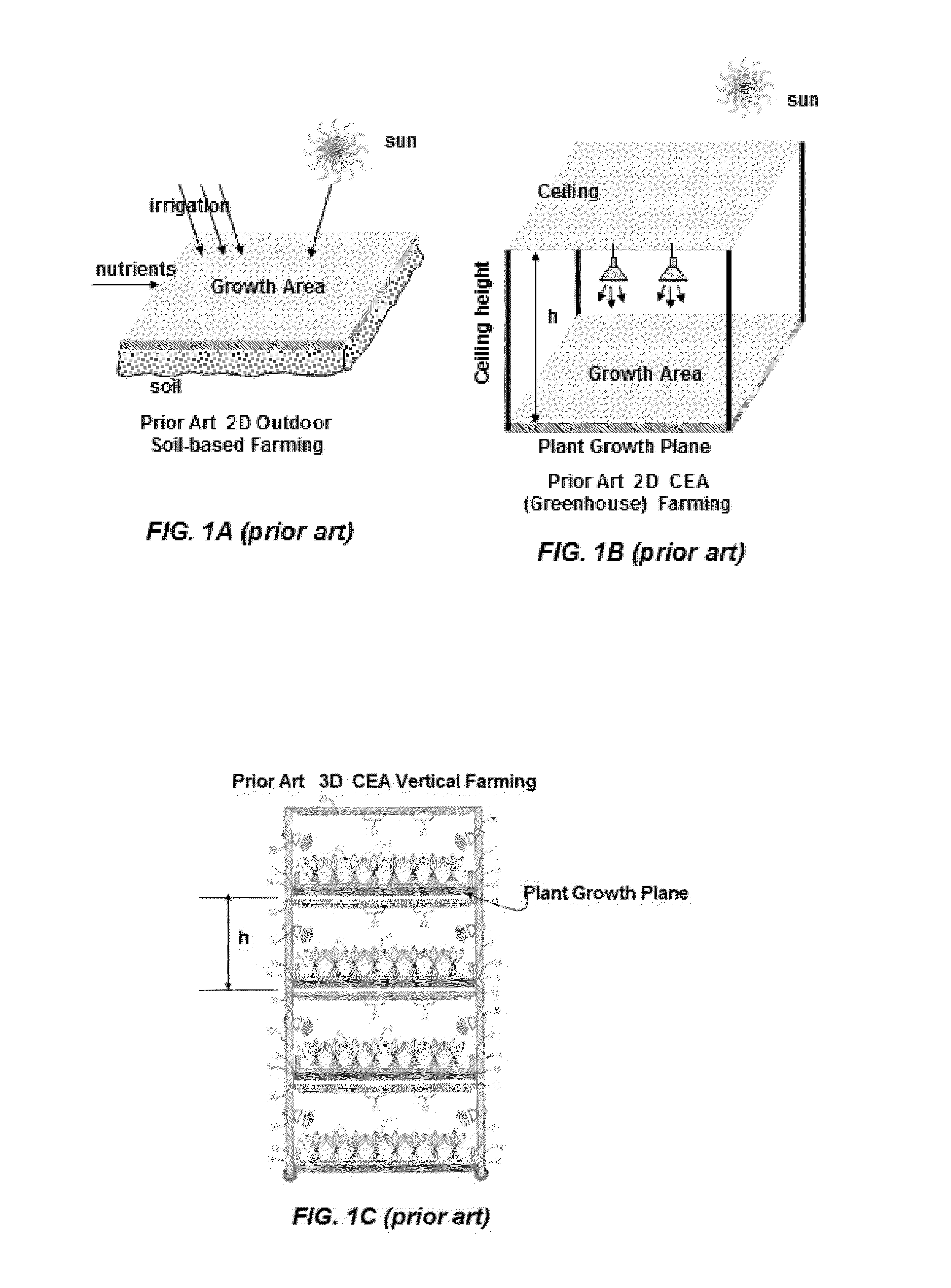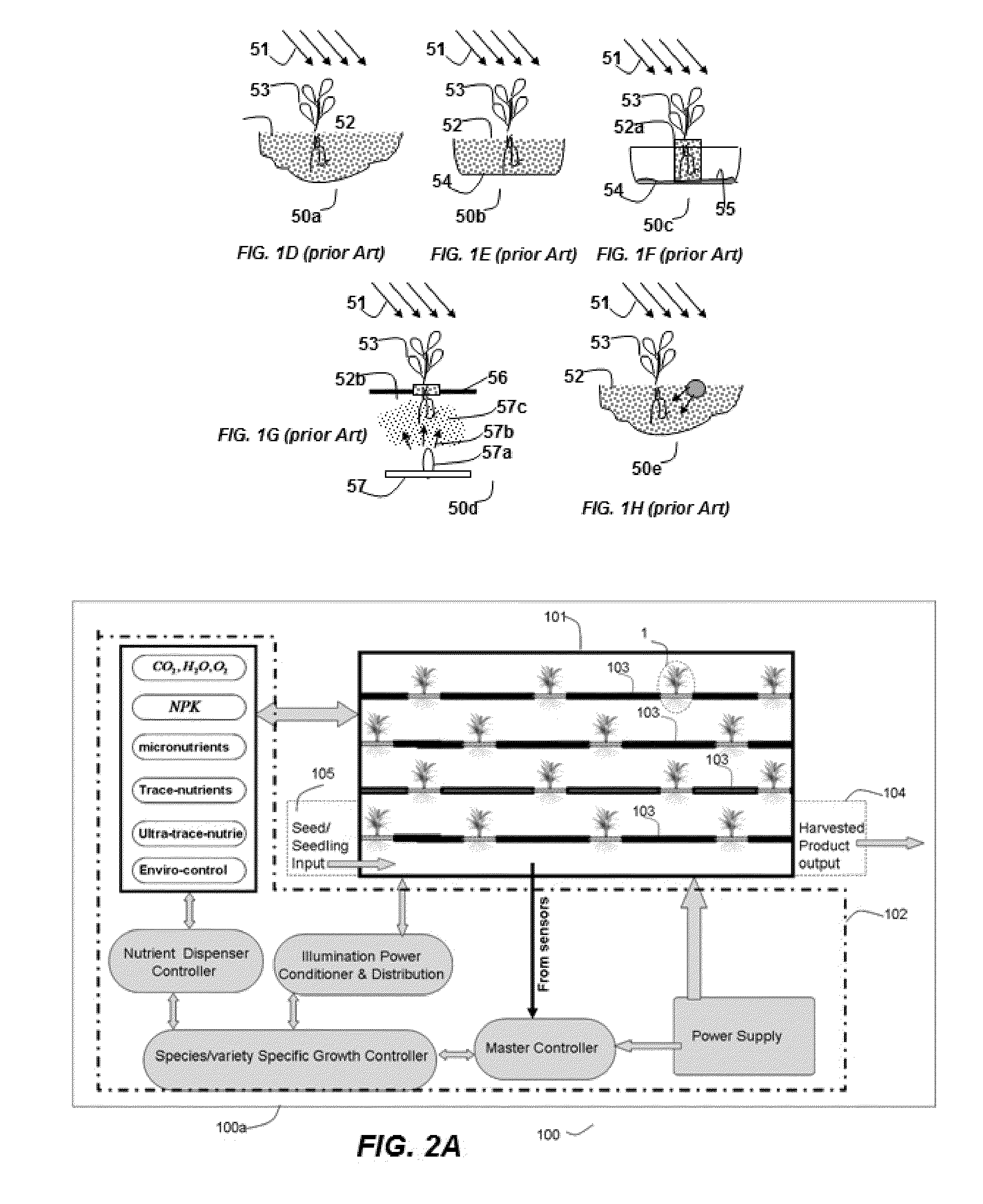High Density Three Dimensional Multi-Layer Farming
a three-dimensional multi-layer farming and high density technology, applied in the field of high density three-dimensional multi-layer farming, can solve the problems of not being able to solve cost reduction, not being able to solve the problem of understanding photosynthesis energy efficiency, not being able to solve the problem of cost reduction, etc., to eliminate the lack of control over nutrients, water saving, and eliminating adverse environmental conditions
- Summary
- Abstract
- Description
- Claims
- Application Information
AI Technical Summary
Benefits of technology
Problems solved by technology
Method used
Image
Examples
Embodiment Construction
[0072]In my co-pending FSA, I described transformational new paradigm for agriculture can be realized to solve the problems facing humanity and achieve food and plant based energy security. One key feature of the new paradigm is the understanding the profitability conditions of farming. This has been accomplished by the formulation of Agriculture Profitability Assurance Law, AgriPAL, It is repeated here as EQ. (2)
ηE(ɛsolɛother)ROE_COE_≥(1+p+f+v).(2)
AgriPAL enables an enterprise to predict profitability of plant growing systems, to prices, and to identify efficiency bottlenecks.
[0073]The economic viability index, EVI, is defined as:
EVI≡ηE(ɛsolɛother)=ηEgsolar.
This links for the first time the economic parameters of farming, profit, p, fixed cost, f, variable cost, v, to the physiological parameters of organisms (plants, algae, other phototrophs), energy conversion efficiency, ηE, including a gain factor,
gsolar=(ɛsolɛother),
wherein, εsol, is the solar energy consumed per cycle and, εo...
PUM
 Login to View More
Login to View More Abstract
Description
Claims
Application Information
 Login to View More
Login to View More - R&D
- Intellectual Property
- Life Sciences
- Materials
- Tech Scout
- Unparalleled Data Quality
- Higher Quality Content
- 60% Fewer Hallucinations
Browse by: Latest US Patents, China's latest patents, Technical Efficacy Thesaurus, Application Domain, Technology Topic, Popular Technical Reports.
© 2025 PatSnap. All rights reserved.Legal|Privacy policy|Modern Slavery Act Transparency Statement|Sitemap|About US| Contact US: help@patsnap.com



